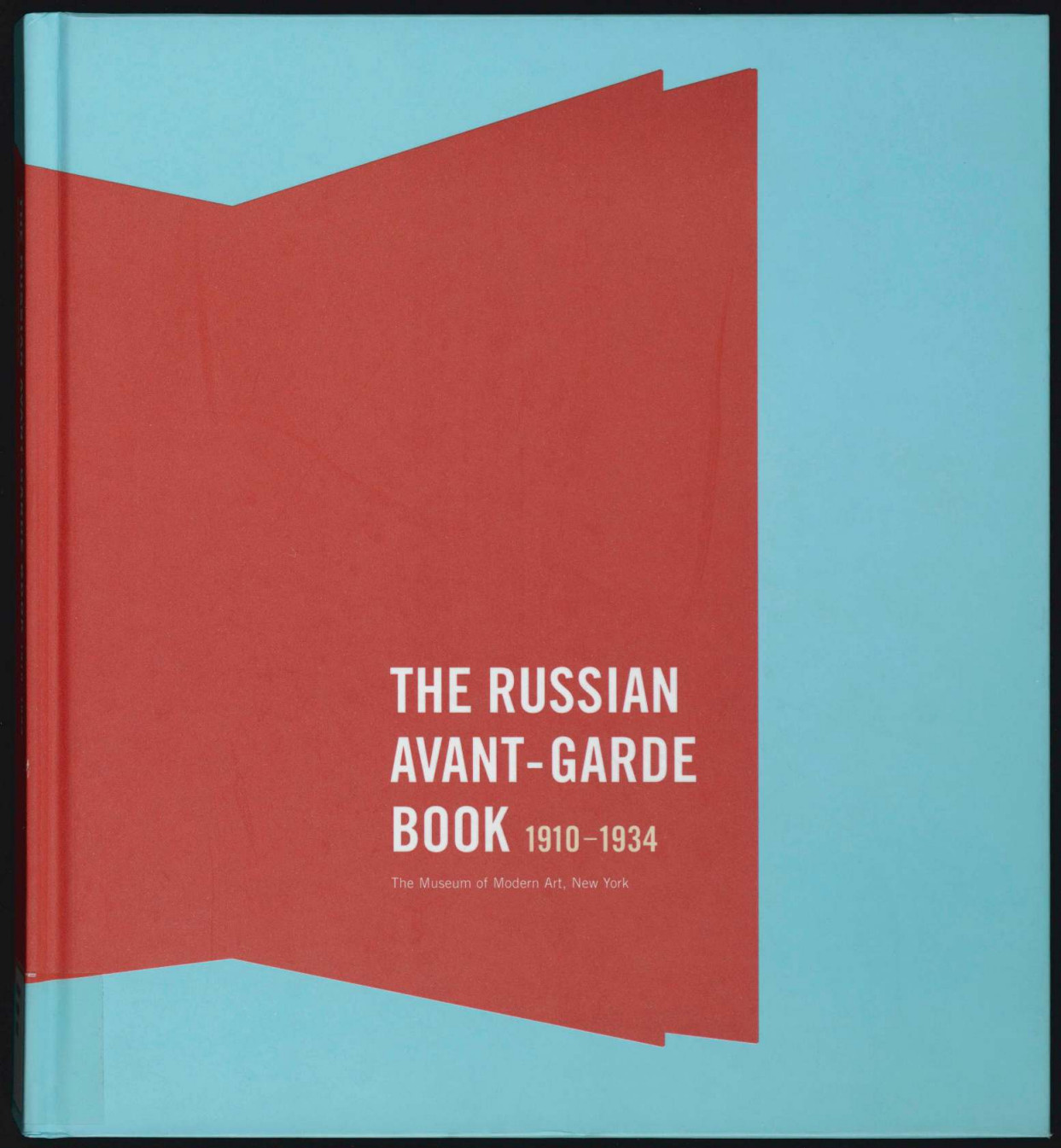Margit Rowell, Deborah Wye: The Russian Avant-Garde Book, 1910-1934 (2002–) [English, Spanish]
Filed under catalogue | Tags: · artists book, avant-garde, book, design, futurism, graphic design, photography, photomontage, propaganda, russia, soviet union

“Russian avant-garde books made between 1900s-30s reflect a vivid and tumultuous period in that nation’s history that had ramifications for art, society, and politics. The early books, with their variously sized pages of coarse paper, illustrations entwined with printed, hand-written, and stamped texts, and provocative covers, were intended to shock academic conventions and bourgeois sensibilities. After the 1917 Revolution, books appeared with optimistic designs and photomontage meant to reach the masses and symbolize a rational, machine-led future. Later books showcased modern Soviet architecture and industry in the service of the government’s agenda.
Major artists adopted the book format during these two decades. They include Natalia Goncharova, El Lissitzky, Kazimir Malevich, Aleksandr Rodchenko, Olga Rozanova, the Stenberg brothers, Varvara Stepanova, and others. These artists often collaborated with poets, who created their own transrational language to accompany the imaginative illustrations. Three major artistic movements, Futurism, Suprematism, and Constructivism, that developed during this period in painting and sculpture also found their echo in the book format.
This publication accompanied an exhibition of Russian avant-garde books at The Museum of Modern Art, New York. Featuring some 300 books, this was the most comprehensive exhibition ever devoted exclusively to the illustrated books made during this period. It was prompted by a gift to MoMA of more than 1,000 Russian avant-garde illustrated books from The Judith Rothschild Foundation, New York.”
With essays by Deborah Wye, Nina Gurianova, Jared Ash, Gerald Janecek, and Margit Rowell.
Publisher Museum of Modern Art, New York, 2002
ISBN 0870700073, 9780870700071
304 pages
via MoMA
Reviews: Holland Cotter (NY Times, 2002), Steven Heller (Eye, 2002).
Exh. review: Kristin M. Jones (Frieze, 2002).
Exhibition website
Publisher (incl. installation views)
WorldCat
English: PDF, PDF (2002, 72 MB)
Spanish: PDF, PDF (2003, 74 MB)
Alfred H. Barr, Jr.: Cubism and Abstract Art: Painting, Sculpture, Constructions, Photography, Architecture, Industrial Art, Theatre, Films, Posters, Typography (1936)
Filed under book, catalogue | Tags: · abstract art, abstraction, architecture, art, art history, avant-garde, constructivism, cubism, dada, design, expressionism, fauvism, film, futurism, impressionism, painting, photography, sculpture, suprematism, surrealism, theatre, typography

The catalogue of the first MoMA’s retrospective of modernism, held 2 March-19 April 1936, laid the theoretical foundation of the museum. Its jacket contains a notorious chart of modernist art history, the Diagram of Stylistic Evolution from 1890 until 1935.
“The catalogue remains an important historical document (as does that for Fantastic Art, Dada, Surrealism). It set abstraction within a formalist framework that—ignoring the intellectual byways of French symbolism, German idealism, and Russian Marxism of the previous thirty years—was shaped by the scientific climate that had started a century before. … The exhibition together with the widespread dissemination of its influential catalogue, established Cubism as the central issue of early modernism, abstraction as the goal.” (Sybil Gordon Kantor, 2003)
The exhibition later traveled to another 7 cities: San Francisco, Cincinnati, Minneapolis, Cleveland, Baltimore, Providence, and Grand Rapids.
Publisher Museum of Modern Art, New York, 1936
249 pages
via MoMA
Commentary: Meyer Schapiro (Marxist Quarterly, 1937), Susan Noyes Platt (Art Journal, 1988), Astrit Schmidt Burkhardt (Word & Image, 2000).
Publisher (incl. master checklist and press releases)
WorldCat
PDF (47 MB)
Comment (1)Your Private Sky: R. Buckminster Fuller: The Art of Design Science (1999)
Filed under book | Tags: · architecture, design, design research, earth, engineering, invention, science, technology

“‘Bucky’ was one of the most revolutionary technological visionaries of this century. As an architect, engineer, entrepreneur, poet, he was a quintessentially American, self-made man. But he was also an outsider: a technologist with a poet’s imagination who already developed theories of environmental control in the thirties (“more with less”) and anticipated the globalization of our planet (“think global – act local”).
This visual reader documents and examines Fuller’s theories, ideas, designs, and projects. It also takes an analytical look at his ideology of technology as the panacea. With numerous illustrations, many published here for the first time, as well as texts by Fuller and the editors.
The publication presents Buckminster Fuller’s creations as a dazzling expression of this unconditionally optimistic technocrat whose vision of driverless Spaceship Earth led him to examine the principles of maximizing effects in the most diverse sectors of design and construction.”
Edited by Joachim Krausse and Claude Lichtenstein
Translated by Steven Lindberg and Julia Thorson
Publisher Lars Müller, Baden, 1999
ISBN 3907044886, 9783907044889
528 pages
via ExP
Review: John Martinson (Geographical Review 2001).
PDF (no OCR, 68 MB)
Comment (0)
